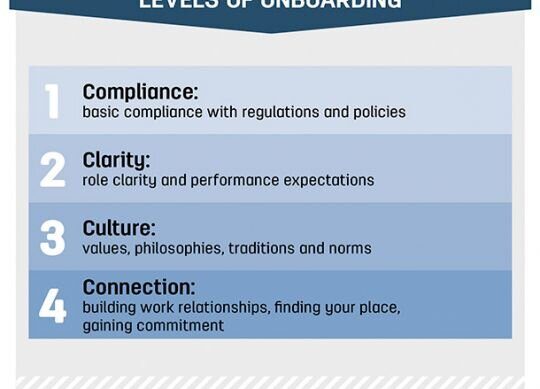Laying the Foundation For Your Team’s Future Success
Setting the stage with employee onboarding
Employee onboarding, specifically on dairy operations, can help reduce employee turnover, increase employee satisfaction and commitment, increase employee safety and increase farm productivity. However, onboarding is more than a quick orientation; it should be an in-depth overview of the entire business process.
When onboarding new employees, it is important that you set the stage properly and don’t jump right into the work. It would be unwise to expect a new employee to start milking in the first five minutes they are on the farm. Instead, focus on the new employee and ensure they have a good experience.
Onboarding has been shown to reduce turnover and increase employee commitment since they are properly being told the rules and expectations. Stup says onboarding can also take the guesswork out of how tasks should be completed and can increase employee safety and productivity.
A successful approach to employee onboarding should include bringing new employees into the organization to complete necessary paperwork, equip them with safety and performance knowledge and skills, and make them feel connected to a worthwhile team.
Stup shared that onboarding is never just a one-day process and provided a few examples of timelines. A milker’s onboarding might take about one month, while a herdsperson’s position should last at least six months.
Levels of onboarding: Creating a roadmap to success
When you’re ready to develop an employee onboarding program, there should be four levels of focus:
1. Compliance: Basic compliance with regulations and policies
The first level of onboarding involves a template to put together a personalized onboarding program for your dairy operation. This template is a customizable road map that plans the onboarding phases and acts as a road map to new employee success.
2. Clarity: Role clarity and performance expectations
The second level of the onboarding process involves training for the job. Standard operating procedures (SOPs) should be taught and be able to be referenced whenever the new employee may need them. According to Stup, the employee’s supervisor should be the one completing the training.
The new employee should be trained using tell, show, do, review. This is when the trainer tells them how to do a task, shows them how to do it, has them do it and then reviews if it was done correctly. This will likely be done multiple times for each phase of training.
3. Culture: Values, philosophies, traditions and norms
The third level of onboarding involves the culture of the job and shows what values, traditions and norms the dairy operation has.
A farm will have a mission statement about producing quality milk and animals, but if the barn is dirty and it is evident they don’t care about producing quality products, then they’re not going to pay attention to the quality. We need to make sure we’re communicating our values and also make sure we are living those values day-to-day.
The culture of the business could be entirely different than what the onboarding training tells the employee it is. It is up to the trainers and the owners to make sure the onboarding is giving an accurate depiction of the workplace.
4. Connection: Building work relationships, finding your place, gaining commitment
The fourth level of the onboarding process is about connection. This needs to be integrated throughout all other onboarding activities. The owner and supervisor should work to make genuine connections with their employees to help create genuine relationships. On any new employee’s first day, they should receive a welcome from the owner and supervisor if they are not the ones performing the onboarding. Integrating fun social activities for employees leads to better connections, such as lunches or team meetings. On larger operations, Stup says it can be helpful to assign a buddy or a mentor, since some employees may not feel comfortable asking their supervisor questions that may seem trivial.
Everyone starts somewhere
Onboarding works because it gives your employees a checklist approach and assigned responsibilities. On a broader scale, it ensures new employees learn all the safety and production training they need and helps your team connect and engage.
Onboarding is the first step to success in any business and provides a foundation for future success for new employees. The process can always be rewritten or changed to fit your farm; everyone must start somewhere.



